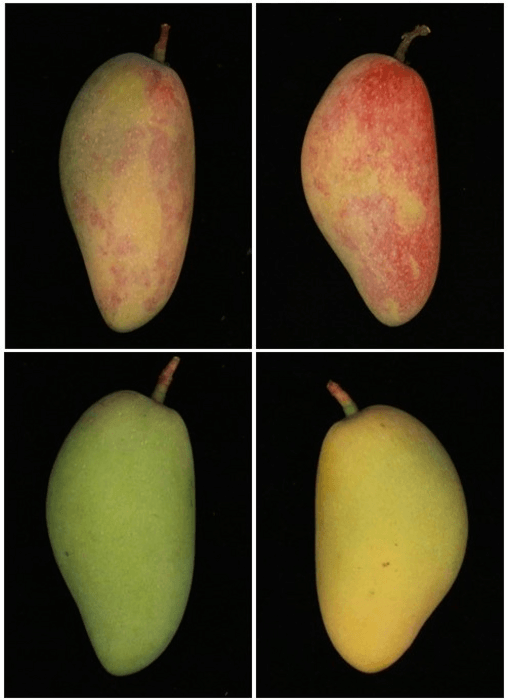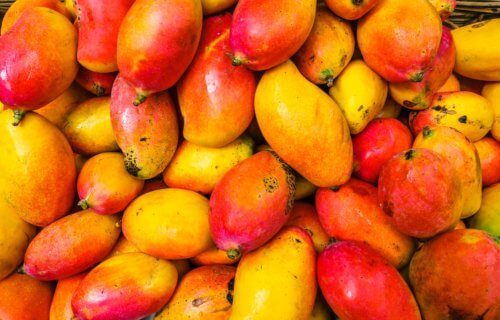ZHEJIANG, China — Blue light is bad for human eyesight, but it seems to be great for growing mangos. A new study by researchers at Zhejiang University in China finds that exposing mangoes to blue light for several days can turn them redder and riper.
It also leaves behind a sweet taste for you to enjoy. The findings may help researchers better understand how different types of light affects the internal quality of fruit.
Plants use sunlight for photosynthesis and to ripen their fruits. When exposed to enough light, fruit peel colors can change which increases the amount of sugar and pigment in fruits. One common example is the reddish hue tomatoes have which comes from the chlorophyll spread all their flesh. Unlike tomatoes, however, mangoes only have pigment in their thick peels and the amount of light can affect their peel color. (By the way — did you know that “mangoes” and “mangos” are both acceptable plural forms?)
Previous studies have focused on the relationship between light and fruit peel appearance, but few have studied the mechanisms driving this and its effect on fruit quality. What’s more, since sunlight comes in different colors and wavelengths, the study authors hypothesized that changes in light could affect the internal fruit contents.

Blue light changes the genes of mangoes
In the current research, the study authors focused on blue light and its effects on the quality and ripeness of a mango. They placed blue light on one batch of mangoes for nine days. Another group of mangos was left in darkness for the same amount of time. After the nine days, they found the mangos exposed to blue light were much riper. This is because blue light caused more anthocyanins in their peels, changing their appearance to a red-yellowish color. Not only did it look ripe, but the mangoes were also softer and sweeter. On closer inspection, the mangoes had more sucrose and carotenoids than the mangoes kept in the dark.
Additionally, the blue light appeared to boost photosynthesis. Further tests detected the presence of blue light-responsive genes (MiCRY and MiHY5) in the photosynthesis process. Researchers also found transcription factor genes as well as tissue-specific pathways involved in the creation of sucrose, anthocyanin, and carotenoids. In other words, the mangoes can use this light to trigger an internal genetic signaling pathway. The effect was seen more in the peel than in the flesh, suggesting the blue light did not penetrate deeper than the skin.
The study is published in the Journal of Agricultural and Food Chemistry.

